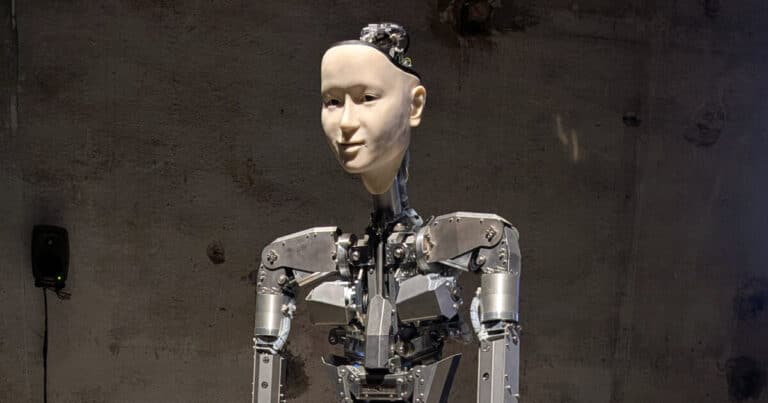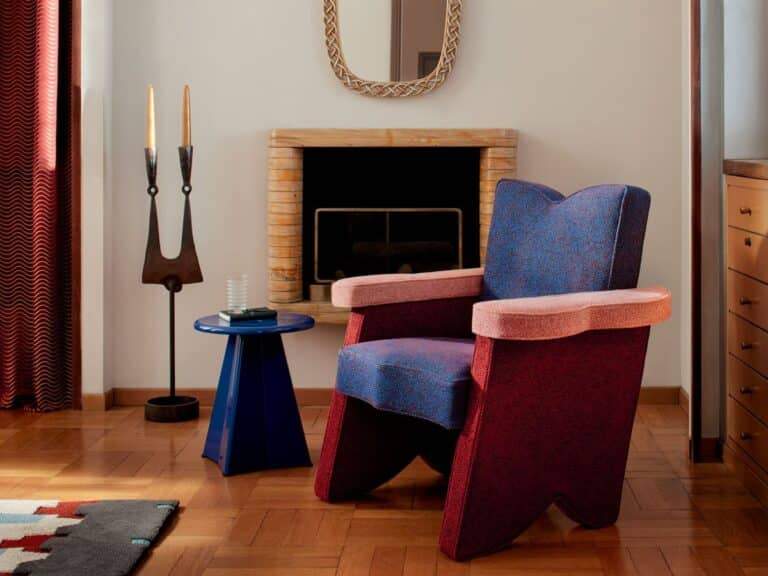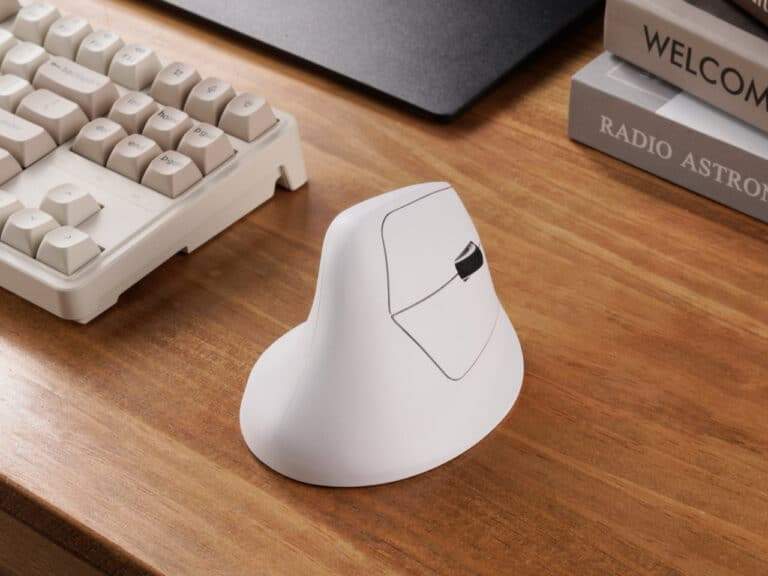Knit One by Isomi: A Revolutionary 3D-Knitted Sofa Without Foam
In a furniture market still dominated by polyurethane foam and bulky forms, Isomi and designer Paul Crofts have introduced a compelling alternative at NeoCon 2025. Their new project, Knit One, is a modular, 3D-knitted seating system that eliminates foam entirely, using only fabric tension and a steel frame to deliver structure and comfort.
This development is not only a feat of engineering but a profound statement on material reduction and sustainable innovation. Aimed specifically at contract and commercial environments, Knit One challenges the norms of sofa design and points toward a radically different future in furniture manufacturing.
Unlike traditional seating that hides complexity inside plush surfaces, Knit One reveals its construction: openly visible frames, breathable forms, and textiles that do all the heavy lifting — both structurally and aesthetically. For Crofts, the goal wasn’t to imitate traditional sofas, but to reinvent them with “the absolute minimum.”
For anyone looking for a reliable and up-to-date architectural resource, ArchUp offers fresh content covering projects, design, and competitions.
Sculpting with Textiles: The Role of 3D Knitting
At the heart of Knit One is a highly technical textile developed in collaboration with Camira, a company known for its sustainable fabric solutions. The yarn — made from 100% recycled and recyclable polyester — is 3D-knitted to form a ribbed, opaque, and soft surface, completely sidestepping the open mesh look usually associated with this manufacturing method.
Unlike standard upholstery, which involves padding and layering, the textile in Knit One is stretched over a steel frame with no internal filling at all. The seat maintains its form through fabric tension, making the sofa simultaneously lightweight, structurally robust, and comfortable — all without adding mass or waste.
3D knitting is a zero-waste process, using computer-controlled machines to produce seamless forms from a single thread. In furniture, its use is rare, particularly in sofas, due to challenges in maintaining structure over wider spans. But Crofts and Isomi embrace this limitation, tailoring the design to defined, upright seating zones rather than sprawling relaxation.
Form Follows Frame: Why This Works for Commercial Interiors
The limitations of 3D-knitting in residential furniture — such as its inability to support reclining or lounging — become strengths in public or office contexts. In contract interiors, furniture is meant for brief, upright interactions, making Knit One’s structure not only adequate but ideal.
Each module is a metal skeleton enveloped in sculptural textile. Users don’t sink in; instead, they’re supported by an architectural form that clearly defines personal space. This is particularly useful in high-traffic areas where durability, hygiene, and visual clarity are essential.
Modules include standard lounge seats, backless benches, and curved segments that can be combined into larger installations. A side table module adds function, while the openness of the design makes maintenance and cleaning easier — another bonus for contract clients.
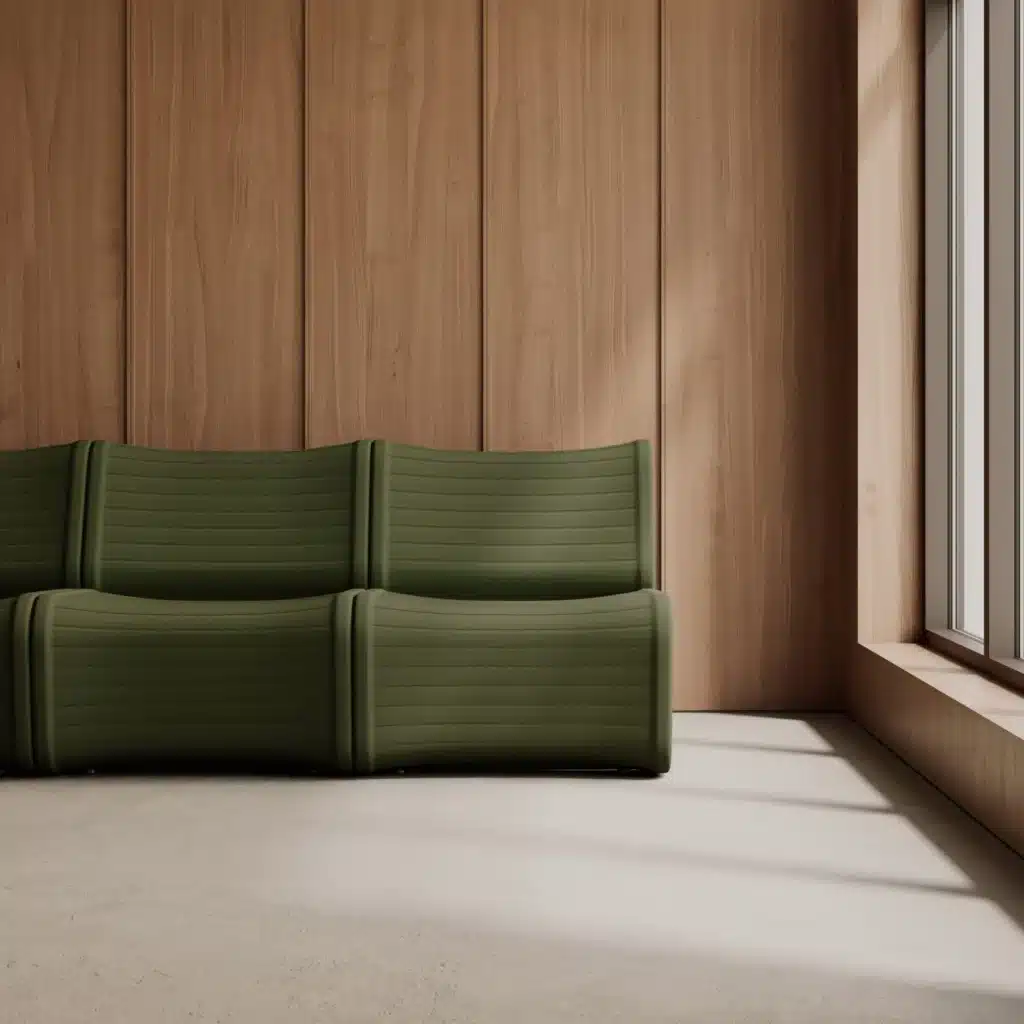
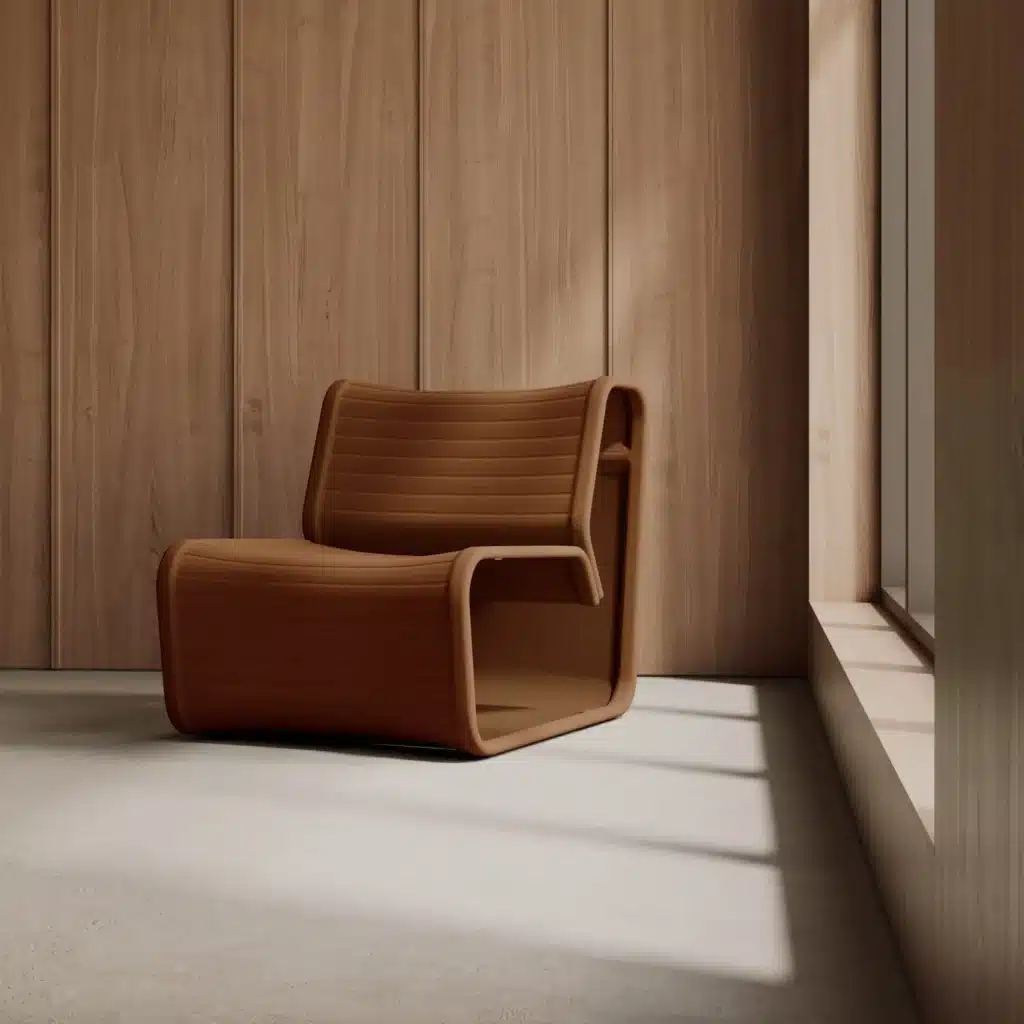
Material Reduction as Design Innovation
Knit One is the logical next step in Paul Crofts’ exploration of sustainable seating. After the cork-filled Tejo sofa in 2024, Knit One proposes an even leaner solution.
“This time, I wanted to go even further and not just replace materials but remove them altogether where possible,” Crofts said.
The mild steel frame is engineered for strength under tension, yet light enough for flatpack shipping. Every connection, every component was rethought for minimalism, making this not just a green product — but a smart one.
There’s a quiet elegance to the honesty of it all: no pretenses, no cushioning illusions. Just air, textile, and precision-engineered support.
Aesthetic Minimalism with Functional Clarity
Visually, Knit One is clean, sculptural, and rhythmic. The ribbed textile creates a subtle topography across each module, reflecting light differently depending on angle and tension. These surface effects elevate the sofa from an experimental concept into a visually compelling commercial product.
When modules are combined, they form a continuous line that’s both unified and distinctly zoned. The open sides show there’s nothing inside — a powerful metaphor for transparency and reduction in design. The system doesn’t pretend to be soft and deep; it declares its function plainly and artfully.
The Architectural Significance: Why Knit One Matters
In architectural terms, Knit One represents a tectonic shift in the language of soft furniture. Rather than continuing the padded archetypes of the 20th century, this sofa reflects a 21st-century understanding of sustainability, modularity, and adaptability.
It raises questions worth asking:
- What does comfort really mean in a shared space?
- Can volume be suggested rather than built?
- Is structure necessarily solid?
Architects and designers will recognize in Knit One a product that resonates with spatial logic, especially in environments designed for flow, openness, and clarity.

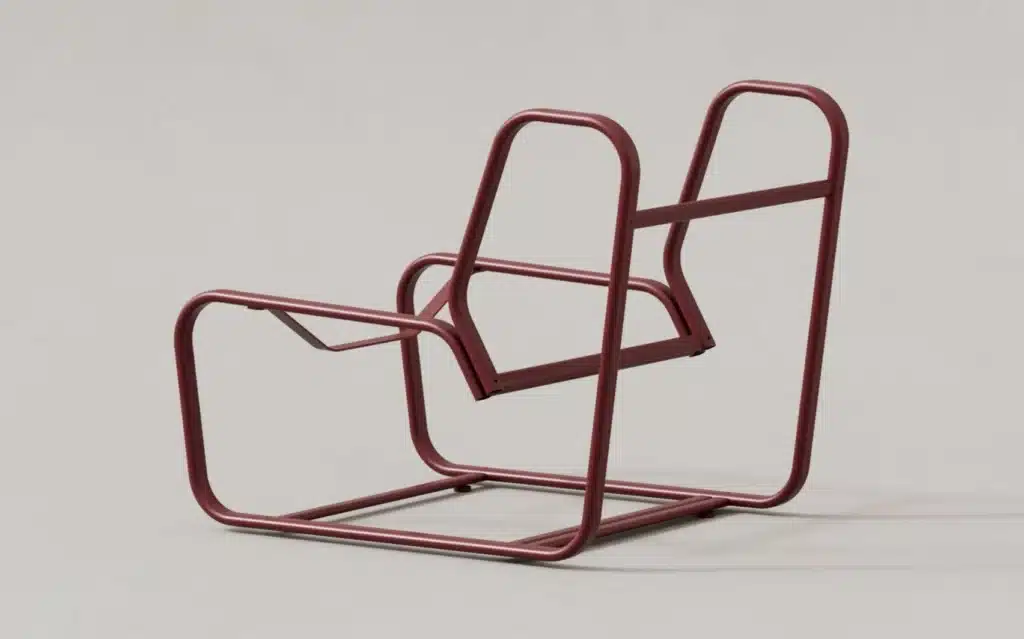

Conclusion: A Radical Reduction Worth Watching
Knit One isn’t just a product launch — it’s a provocation. It redefines not just what sofas can be made of, but what they can express. In a time when environmental pressures are reshaping architecture and design, this seating system offers a vision of the future: light, minimal, honest, and adaptable.
It might not belong in every home, but for contract environments — and designers thinking toward tomorrow — Knit One is more than enough. It is architecture in soft form.
Explore More with ArchUp
ArchUp documents the evolving profession of architects worldwide, from career insights and research to project profiles and industry news. Our editorial team publishes global salary trends, career advice, and opportunities for emerging talents. Learn more on our About page or Contact us to collaborate.



